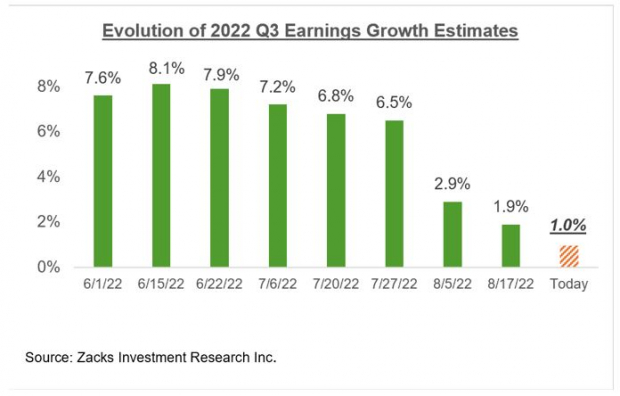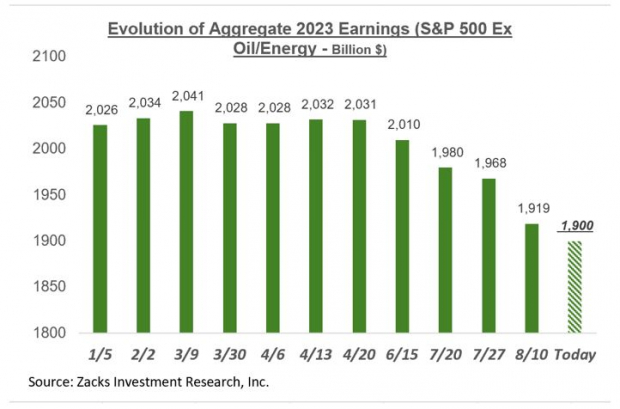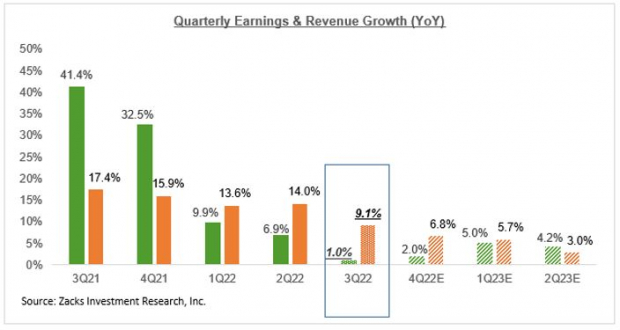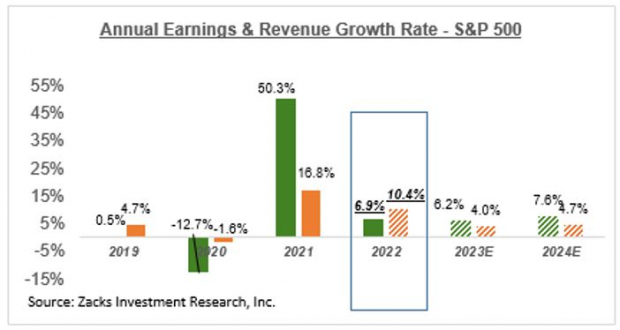Are Earnings Estimates Out Of Sync With The Economy?

Image: Bigstock
Companies with fiscal quarters ending in August have been coming out with quarterly reports lately. Oracle (ORCL - Free Report), Adobe (ADBE - Free Report), Accenture (ACN - Free Report), General Mills (GIS - Free Report), Costco (COST - Free Report), FedEx (FDX - Free Report), Lennar (LEN - Free Report), and a total of 12 such S&P 500 members have reported results thus far.
As we have pointed out here before, the Q3 earnings season will really get going in mid-October when the big banks will come out with their results. But the early reports from Oracle and others for their fiscal periods ending in August also get counted as part of the Q3 earnings season tally.
The preceding earnings season turned out to be better than expected; not great, but not bad either. Given the unprecedented Fed tightening and the resulting macro uncertainties, market participants feared the corporate profitability picture would start deteriorating.
We saw some companies miss estimates and guide lower. But for the most part, the market’s earnings fears didn’t bear out. That said, the strong U.S. dollar has joined the pre-existing headwinds of logistical challenges and inflationary pressures in weighing on corporate profitability. We will have to wait and see whether the Q3 reporting cycle will bring in the long-feared earnings downturn.
Estimates have started coming down, with the overall revisions trend turning negative even after accounting for the persistent favorable revisions trend enjoyed by the Energy sector.
You can see this in the revisions trend to Q3 estimates in the chart below.

Image Source: Zacks Investment Research
If we look at the evolution of Q3 earnings growth expectations on an ex-Energy basis, the expected growth rate has dropped from +2.1% on July 6th to -5.7% today.
The chart below shows how the expected aggregate total earnings for the full-year 2023 have evolved on an ex-Energy basis.

Image Source: Zacks Investment Research
As you can see above, aggregate S&P 500 earnings outside of the Energy sector have declined -6.5% since mid-April, with double-digit percentage declines in Retail (down -14.9%), Construction (-16.5%), and Tech (-11.2%). Estimates have been coming down in the Consumer Discretionary, Industrial Products, Medical, and Finance sectors as well.
The Overall Earnings Picture
Beyond Q2, the growth picture is expected to modestly improve, as you can see in the chart below that provides a big-picture view of earnings on a quarterly basis.

Image Source: Zacks Investment Research
The chart below shows the overall earnings picture on an annual basis, with the growth momentum expected to continue.

Image Source: Zacks Investment Research
Please note that a big part of this year’s growth is thanks to the strong momentum in the Energy sector whose earnings are on track to grow +137.2% this year. Excluding this extraordinary Energy sector contribution, earnings growth for the rest of the index would be up only +0.4%. This flat earnings picture for this year is also in-line with the economic ground reality.
Earnings next year are expected to be up +6.2% as a whole and +8% excluding the Energy sector. This magnitude of growth can hardly be called out-of-sync with a flat or even modestly down economic growth outlook. Don’t forget that headline GDP growth numbers are typically in real or inflation-adjusted terms while S&P 500 earnings discussed here are not.
As mentioned earlier, 2023 aggregate earnings estimates on an ex-Energy basis are already down -6.5% since mid-April. Perhaps we see a bit more downward adjustment to estimates over the coming weeks, after we have seen Q3 results. But we have nevertheless already covered some ground in taking estimates to a fair or appropriate level.
This is particularly so if whatever economic downturn lies ahead proves to be more of the garden variety rather than the last two such events. Recency bias forces us to use the last two economic downturns, which were also among the nastiest of economic downturns in recent history, as our reference points. But we need to be cautious against that natural tendency as the economy’s foundations at present remain unusually strong.
More By This Author:
Recession Fears And The Earnings Outlook
Q3 Earnings Season Gets Underway
Exploring The Energy Sector's Ongoing Earnings Boom
Disclosure: Zacks.com contains statements and statistics that have been obtained from sources believed to be reliable but are not guaranteed as to accuracy or completeness. References to any specific ...
more


